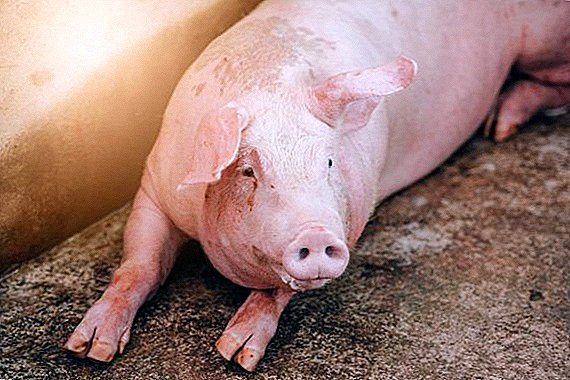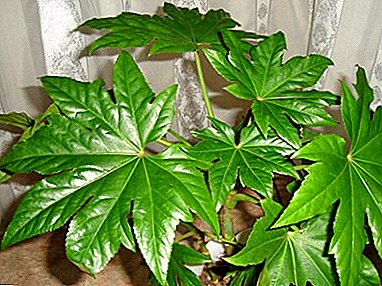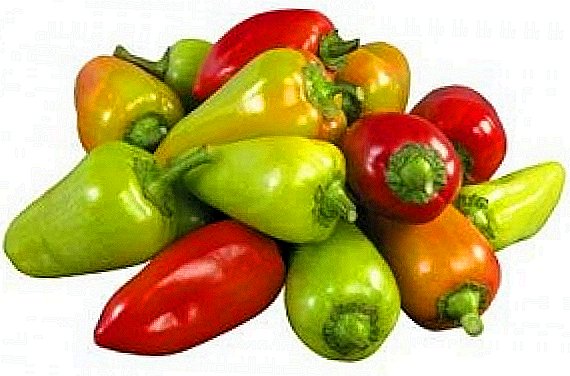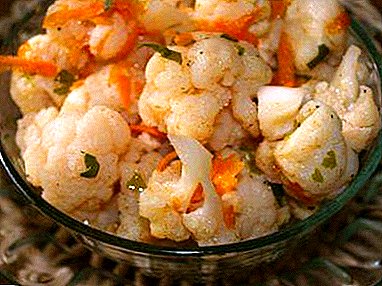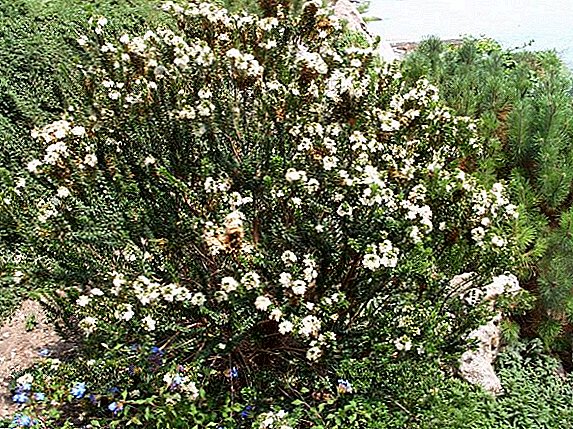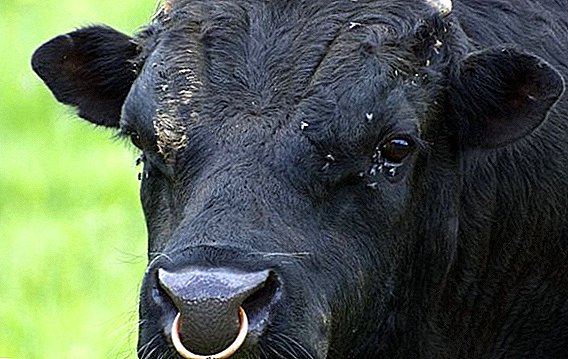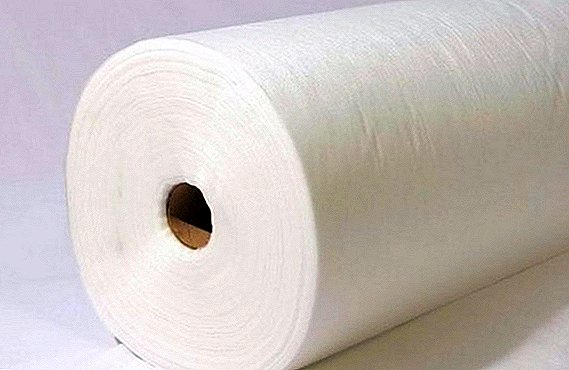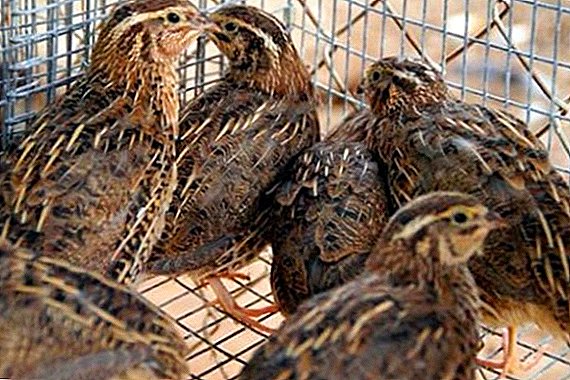 In this article we will talk about some features of breeding. quail at home. You will learn about the quail breeds, the period of egg incubation, the rearing of the young and the conditions of these beautiful birds.
In this article we will talk about some features of breeding. quail at home. You will learn about the quail breeds, the period of egg incubation, the rearing of the young and the conditions of these beautiful birds.
Did you know? In Turkestan (one of the oldest cities in Kazakhstan), male quail fights are a kind of sport. These competitions are held in special arenas, and the whole action resembles cockfights.
Breeds of domestic quail
Breed quail are divided into the following areas:
- Egg;
- Meat;
- Meat-egg.
Consider the egg quail breeds:
- English black quail. The mass of females - 190 g, males - 180 g. This breed gives an average of 280 eggs per year (egg weight - 15 g).
- English (white). The weight of the female is 370 g, the weight of the male is 280-300 g.
- Marble. The weight of females is 150 g, the weight of males is 125 g. It gives 280 eggs a year, with an approximate weight of 11 g.
- Japanese quail.
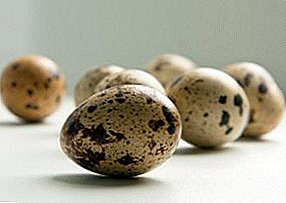 This species is the basis for many other types of quail. The mass of females of this breed is 140 g, males - 120 g. On average, they give 280 eggs (weight - 10-12 g) per year. They are unpretentious to the conditions of detention.
This species is the basis for many other types of quail. The mass of females of this breed is 140 g, males - 120 g. On average, they give 280 eggs (weight - 10-12 g) per year. They are unpretentious to the conditions of detention.
Important!Unpretentiousness to conditions of detention - does not exclude the need for veterinary care!
Meat direction is represented by the following breeds:
- Texas white. It is an excellent option for breeding "for meat." An important disadvantage is the poor fertility of eggs. The weight of the female is 450 g, the weight of the male is 400 g.
- Pharaoh. Females weigh 290 g, males - 180 g. Eggs of this breed are perfectly fertilized. Egg weight - 14 g, egg production rate - 180 pcs per year.
- Pharaoh Turkish. The weight of the female is 380 g, the male - 330 g. They have good egg production.
 Meat-egg direction is represented by Estonian breed. It is great for both meat and for eggs. The weight of the female is 200 g, the male is 170. Egg production is 300 pieces per year. Such birds are great for commercial keeping.
Meat-egg direction is represented by Estonian breed. It is great for both meat and for eggs. The weight of the female is 200 g, the male is 170. Egg production is 300 pieces per year. Such birds are great for commercial keeping.In the process of selecting a breed, you need to consider not only the weight and egg production, but also the following points:
- the percentage of young stock release (the higher - the more you will get new individuals from hatched eggs);
- requirements for conditions of detention (here we consider the temperature range, lightness and other factors);
- feed intake (in meat breeds, feed intake is higher, in egg - lower);
- egg weight (egg production may be less, but the weight of each egg will be more).
Important! Some breeds, when exposed to adverse conditions, begin to deteriorate worse, while others lose weight or die. Therefore, the organization of the required conditions of detention should be taken with the utmost seriousness.
Quail Egg Incubation
 Incubators are of different types and designs, the main thing - they must be serviceable and equipped with a thermostat. It is desirable that in the incubator was the function of turning the eggs, but its absence is not critical. When keeping a small (up to 2 thousand) number of "chickens", household incubators should be used, since it is easier to work with them. With each bookmark you will receive about 70% of the chicks. The reason for this error is that the bird can initially give an unfertilized egg, plus you can not ignore the inaccuracies in the incubation itself, and for which you will get 25-30% of the "dummies".
Incubators are of different types and designs, the main thing - they must be serviceable and equipped with a thermostat. It is desirable that in the incubator was the function of turning the eggs, but its absence is not critical. When keeping a small (up to 2 thousand) number of "chickens", household incubators should be used, since it is easier to work with them. With each bookmark you will receive about 70% of the chicks. The reason for this error is that the bird can initially give an unfertilized egg, plus you can not ignore the inaccuracies in the incubation itself, and for which you will get 25-30% of the "dummies".
We proceed to the process of laying eggs in the incubator.
Did you know?The quail bred in the incubator are no different from the nestlings hatching naturally.
There are two options for laying eggs in the incubator:
- vertical;
- horizontal.
It clearly looks like this: in horizontal position, 58 chicks will hatch out of 100 eggs. With a vertical arrangement, from the same 100 eggs, 75 quail will turn out. But! In the first case, you can simultaneously lay 280 eggs, and in the other - only 200.
 For the vertical arrangement of eggs in the incubator, it is necessary to install additional trays. They can be made from store trays for quail eggs, cut into two pieces and burned a hole at the bottom of each recess (you can also make a heated nail).
For the vertical arrangement of eggs in the incubator, it is necessary to install additional trays. They can be made from store trays for quail eggs, cut into two pieces and burned a hole at the bottom of each recess (you can also make a heated nail).
The output and survival rate of young animals directly depend on compliance with the incubation mode. Therefore, it is important to comply with all requirements for this process.
We will analyze in stages: Stage 1 - the period of "peace". During this time, eggs should not be turned or rubbed. Stage 2 - a period of active growth. From 3 to 15 days of incubation, you need to start turning the eggs so that the embryo does not stick to the shell. Stage 3 - the period of withdrawal. 2 days before the chicks appear, stop turning the eggs and spread them a little more freely. In recent days, you can spray the eggs manually with a spray gun to increase the humidity.
 Perepelik vyklevyvayutsya within 4-6 hours. After birth, you need to wait until the chicks are dry, then they are transplanted into a heated and disinfected brooder.
Perepelik vyklevyvayutsya within 4-6 hours. After birth, you need to wait until the chicks are dry, then they are transplanted into a heated and disinfected brooder.
Important!It is possible to lay new eggs only 2 hours after hatching of chicks and subsequent disinfection.
Rearing
Now we look at the rules of care and maintenance quail at home. Nestlings of different age groups do not get along together, therefore it is impossible to keep them in the same box.
 After hatching, quail is moved to brooder - a box with an electric heater. An important condition for growing is maintaining the desired temperature (+ 35-40 ° C), which is provided by infrared lamps or incandescent lamps. Energy saving and fluorescent lamps are not suitable for heating. Starting from the 8th day and ending on the seventeenth, the temperature is gradually reduced to + 30 ° C. From 17 to 28 days the temperature should be + 25ºC. Keep the humidity within 50-60%, it is impossible to keep quail in damp places.
After hatching, quail is moved to brooder - a box with an electric heater. An important condition for growing is maintaining the desired temperature (+ 35-40 ° C), which is provided by infrared lamps or incandescent lamps. Energy saving and fluorescent lamps are not suitable for heating. Starting from the 8th day and ending on the seventeenth, the temperature is gradually reduced to + 30 ° C. From 17 to 28 days the temperature should be + 25ºC. Keep the humidity within 50-60%, it is impossible to keep quail in damp places.
Important! It is forbidden to use in the form of litter newspapers and other typographical products containing lead. Otherwise, the chicks will die within a week.
The size of the box for growing 20 quail are as follows: length 65 cm, width 35 cm. A floor from a welded grid of 5 mm by 10 mm (or 10 mm by 10 mm). Heating lamps are suspended at a height of 12-15 cm from the floor. In the box you need to install a vacuum drinker and a thermometer. Under the design fits pallet for collecting litter. It is important that the waste does not accumulate in the box itself, as the parasites will breed in them, and the chicks will start to hurt. Grow chicks with defects and diseases should be separated from healthy ones.
Important! When increasing the area of the box, do not forget about the increase in the number of heaters!
In the first 4 days, on the floor of the cage / box you need to lay a canvas fabric and change it every day so that microorganisms do not start in it. If the mesh bottom is not closed, then the quails can fall into the holes and get injured. In the first week, for feeding use a trough feeder (its depth should be no more than 2 cm.).
Now we clarify the important aspects of caring for chicks:
- Water in the drinking bowl should be changed at least twice a day;
- The feeder is washed after each feeding;
- It is necessary to provide chicks with constant access to water and feed.
Lighting mode
 When breeding oviparous breeds, round-the-clock coverage is provided for 2 months. If you breed meat breeds, then the duration of coverage increases to 3 months. After the expiration of the required period, the duration of illumination is reduced to 17 h.
When breeding oviparous breeds, round-the-clock coverage is provided for 2 months. If you breed meat breeds, then the duration of coverage increases to 3 months. After the expiration of the required period, the duration of illumination is reduced to 17 h.
When the quail is one month old, they are transplanted to an adult bird. Make sure that there is no “hierarchical” fights, otherwise young quails may die.
Quail conditions
There are several requirements, the fulfillment of which will help to properly keep the birds and maintain their normal health.
Requirements for the room
Mature quails are placed in boxes that are made of cardboard or plywood. An excellent option would be a cage for quails with the following sizes: 130-150 sq cm for one individual. Holes should be made in the walls through which quails can reach food and water. It is also necessary to take care of the absence of drafts. If quails began to fall feathers - this is the main sign that you need to remove the cage to another location.
 Lighting is an important factor for quails when they are kept at home. Brightness should be moderate. The duration of daylight for quails during egg-laying is 15 to 17 hours. The luminous intensity should not be higher than 4 W per 1 square meter. In bright light, the behavior of quails is very nervous: the birds peck at each other and fight.
Lighting is an important factor for quails when they are kept at home. Brightness should be moderate. The duration of daylight for quails during egg-laying is 15 to 17 hours. The luminous intensity should not be higher than 4 W per 1 square meter. In bright light, the behavior of quails is very nervous: the birds peck at each other and fight.
Important! Heaters should not be placed in the middle of the cage to avoid injury and burns. It is also forbidden to use fluorescent lamps.
In the room where the box stands, the humidity should be in the range of 55 to 70%. The temperature when keeping quail at home should not exceed 15-25 ° C.
Quail feeding
 Feed quail should be 3 times a day. Their portions should consist of feed with small or crushed grains. Greens and eggs are added to food. Feeders and drinkers are mounted outside the boxes so that the birds have free access to them. Water changes once a day or when visibly cloudy. The drinking trough itself should be disinfected 2-3 times a week. Drinking bowls must be supplemented with heating so that the water is at room temperature. In stores you can buy specialized food for quail, which is rich in vitamins and minerals. You can use in the form of feed and such vegetables:
Feed quail should be 3 times a day. Their portions should consist of feed with small or crushed grains. Greens and eggs are added to food. Feeders and drinkers are mounted outside the boxes so that the birds have free access to them. Water changes once a day or when visibly cloudy. The drinking trough itself should be disinfected 2-3 times a week. Drinking bowls must be supplemented with heating so that the water is at room temperature. In stores you can buy specialized food for quail, which is rich in vitamins and minerals. You can use in the form of feed and such vegetables:
- Beet. This vegetable contains a lot of sugar (calories) and vitamins that help the development of quail and reduce the risk of developing pathologies. In the vegetable food is served in the form of porridge.
- Carrot. Contains carotene and vitamin A, which is good for poultry.
- Cabbage. Contains vitamin B and calcium. Calcium strengthens bones and joints, prevents feathers from falling out.
- Potatoes. Contains a large amount of starch, which replenishes energy well.
Cottage cheese is an excellent supplement option - an irreplaceable source of protein.
Important! Before using other vegetables or fruits in the form of poultry food, make sure that it does not harm them.
Disinfection and cleaning
In the boxes should be general cleaning as often as possible. The litter should always be dry and not have an unpleasant smell (it should be changed at least once a day). To get rid of ectoparasites, which live in the feathers of birds and on their skin, you should put a small bowl of sand. Bathing in them, the bird gets rid of possible parasites in a natural way.
After bathing you should check the bowl for the presence of eggs. In the corners of the boxes, most often, the remains of food and bird excrement accumulate. This leads to the multiplication of dangerous bacteria. After cleaning the corners, they should be sprayed with disinfectant. Failure to comply with these rules threatens with disease or even the death of your birds.
Breeding quails is an interesting activity that requires a lot of time and desire. The effort you spend will pay off with interest, because you will receive not only an interesting type of bird, but also a valuable product in the form of dietary meat and healthy eggs.


 This species is the basis for many other types of quail. The mass of females of this breed is 140 g, males - 120 g. On average, they give 280 eggs (weight - 10-12 g) per year. They are unpretentious to the conditions of detention.
This species is the basis for many other types of quail. The mass of females of this breed is 140 g, males - 120 g. On average, they give 280 eggs (weight - 10-12 g) per year. They are unpretentious to the conditions of detention.